Coal needs to fall VERY quickly
The scenarios laid out by the IPCC make it clear that global coal use has to collapse to reach 1.5 degrees. Coal use needs to fall by 75% by 2030, relative to 2019 (see Carbon Brief graphic below). That’s much faster than gas or oil, which need to fall by 10% in the median scenario. In addition, coal is the only fossil fuel that needs to be phased out by 2050.
We estimate that in 2021 overall coal use was already 2% higher than in 2019. We are going in the wrong direction.
Coal for power generation needs to fall even quicker than overall coal use. Global unabated coal power needs to fall by 87% in the next 9 years, from 10,059 terawatt hours (TWh) in 2021 to 1,153 TWh in 2030 (see graphic below).
Coal power has gone the wrong way since 2019 when it was at 9,618 TWh, which has reduced our carbon budget further. This means that models now allow for only half the coal power in 2030 than previously. Before, the median 1.5°C-compliant coal generation in 2030 was 2,430 TWh – now it is 1,153 TWh.
Unabated coal power needs to be completely phased out by 2040, according to all-but a handful of outlier scenarios.
There is some good news. All 4+ degree scenarios have coal power at least doubling by 2040. Because the recent momentum on coal makes it very unlikely that coal would double within the next two decades. This makes all 4 degrees scenarios highly unlikely, at least on the trajectory for coal power.
However, to reach 1.5°C degrees, and even in most 2 degree scenarios, coal needs to collapse quickly. Almost all 1.5°C no or low overshoot scenarios show coal power collapsing by two thirds or more by 2030. In these scenarios, unabated coal power is mostly phased out by 2040. For 1.5°C high overshoot scenarios and 2 degrees, coal falls less rapidly by 2030, but they still require a near phaseout of coal power by 2040. Coal with carbon capture and storage does not play a role in the power sector in most of the 1.5°C scenarios assessed by the IPCC.
It’s important to note that not just coal power needs to be phased out, unabated gas power also needs to fall drastically (see graphic below). In the median 1.5°C scenario, gas power falls by three-quarters from 6,100 TWh in 2021 to 1,500 TWh in 2040.
There are some scenarios that have near-zero gas by 2040, in line with the IEA’s Net Zero by 2050 report, which shows a global net-zero power sector by 2040.
The IPCC scenarios also align well with the IEA’s Net Zero milestone that the power sector should be net-zero emissions by 2035 for OECD countries. In the IPCC median 1.5 degree scenario, OECD coal power in 2035 is zero, and unabated gas power is only 3% of total electricity supply (see graphic below).
Wind and solar are the backbone of the future energy system
The new IPCC report is clear on the role that wind and solar play in an energy system that avoids catastrophic global climate change.
The latest models outline a greater role for solar, which produces three times more electricity by 2030 compared to the models assessed by the IPCC in 2019.
Together, wind and solar need to make up over 40% of global electricity by 2030 to reach 1.5 degrees. This puts the IPCC models in line with the IEA’s Net Zero by 2050 Roadmap, which shows 40%. At last, the models assessed include – at least to some extent – the rapidly falling cost of wind and solar.
The IPCC report shows that wind and solar are the most impactful and cheapest tools in the toolbox. They can help us avert the climate crisis and save money while we do that. The popular IPCC graphic below shows that wind and solar can deliver over 8 gigatonnes a year of emissions savings, over a third of the 24 gigatonnes required for 1.5 degrees in 2030. It also shows that half of the emissions reductions from wind and solar would save money compared to the reference scenario.
Reduced reliance on unproven technologies
The cost reductions in wind and solar meant that 1.5 degree scenarios have become much more realistic as they don’t need to rely as much on unproven and expensive technologies like carbon capture and storage (CCS) or bioenergy in the power sector.
Even by 2040, the shares for CCS and bioenergy are very small. Median in 1.5 degrees is 1% for bioenergy with CCS, 1% for bioenergy without CCS, 0.3% for coal with CCS, 1% for gas with CCS and 1% for oil with CCS. In total that adds to 4% for fossil CCS and 2% for all bioenergy (CCS and non-CCS).
No room for new coal
Because coal power needs to phase out by 2040 for 1.5 or 2 degrees, it should be obvious there is no room for new coal power plants.
However, a key sentence that appeared in the draft did not make it through the political editing process: “This will require the cancellation of new coal power plants.”
It was watered down to the final version of the IPCC report citing “major options” including “cancellation of new coal installations”.
The IPCC graphic below usefully illustrates why there is no room: existing fossil infrastructure already blows the carbon budget. Already, existing coal and gas infrastructure have lifetime emissions of 660 Gigatonnes that exceed the entire 1.5°C carbon budget of 510 Gigatonnes. Of this, coal and gas power plants make up 358 Gigatonnes. Currently proposed coal infrastructure would add an additional 97 Gigatonnes to those emissions, blowing through the carbon budget even further.


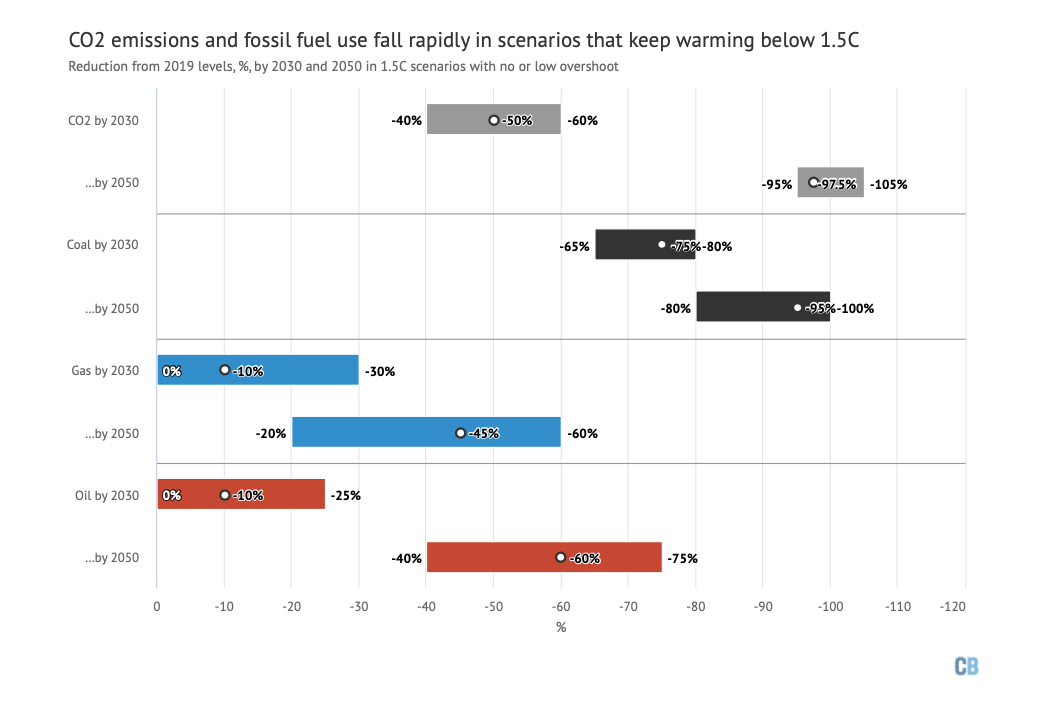
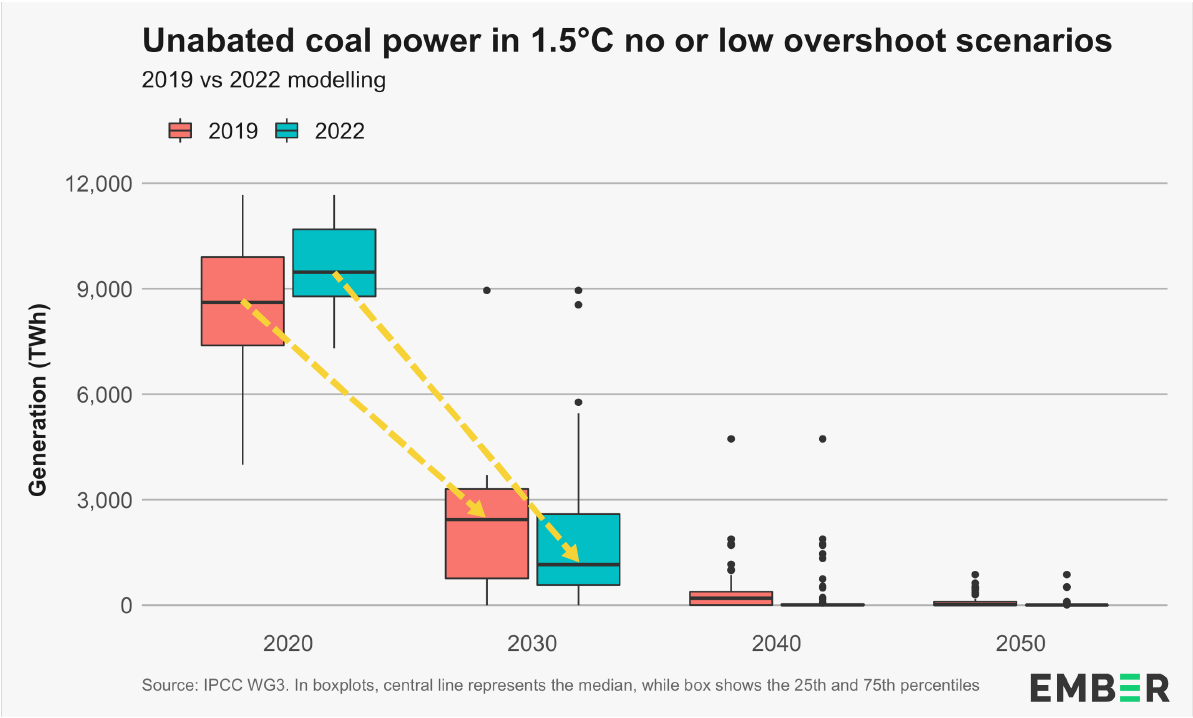
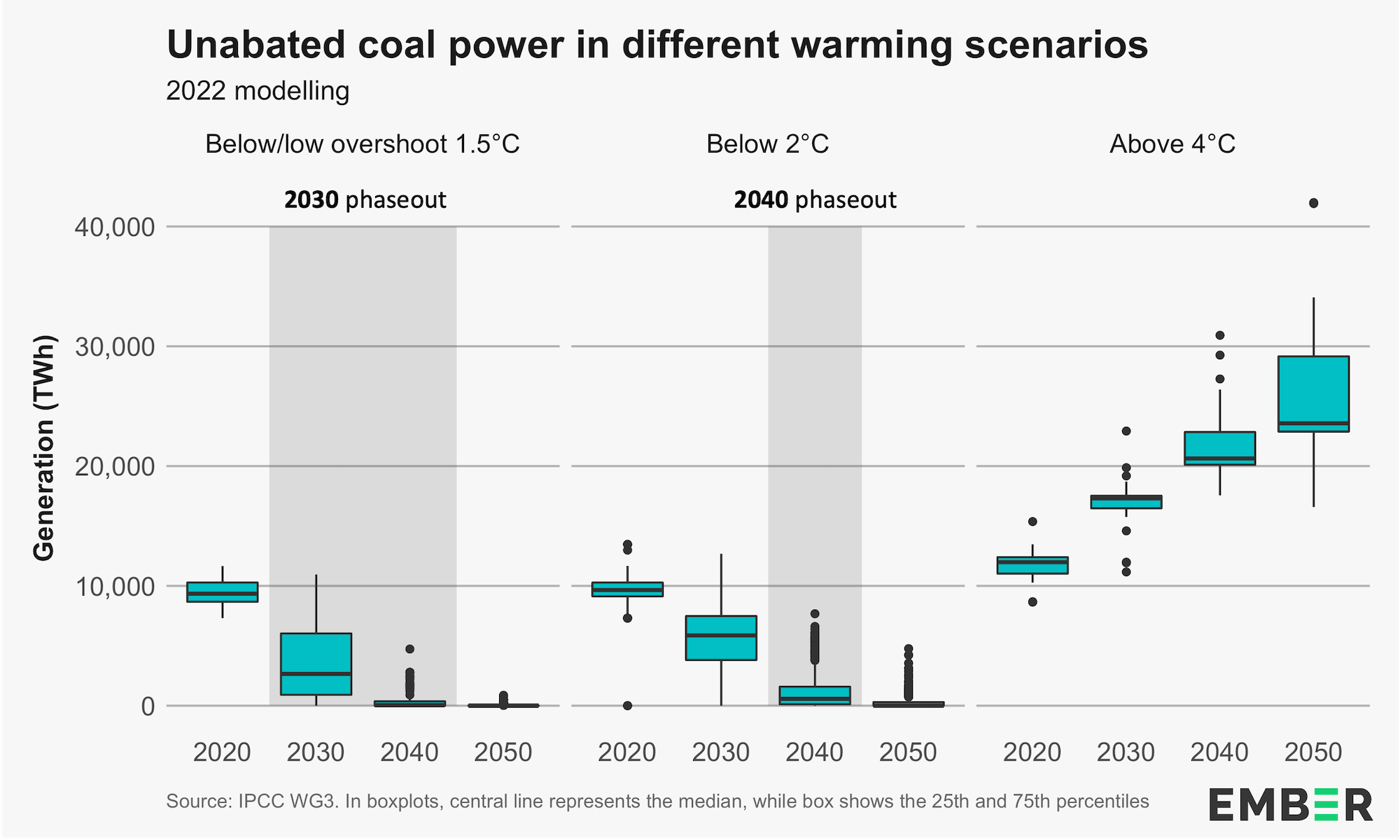
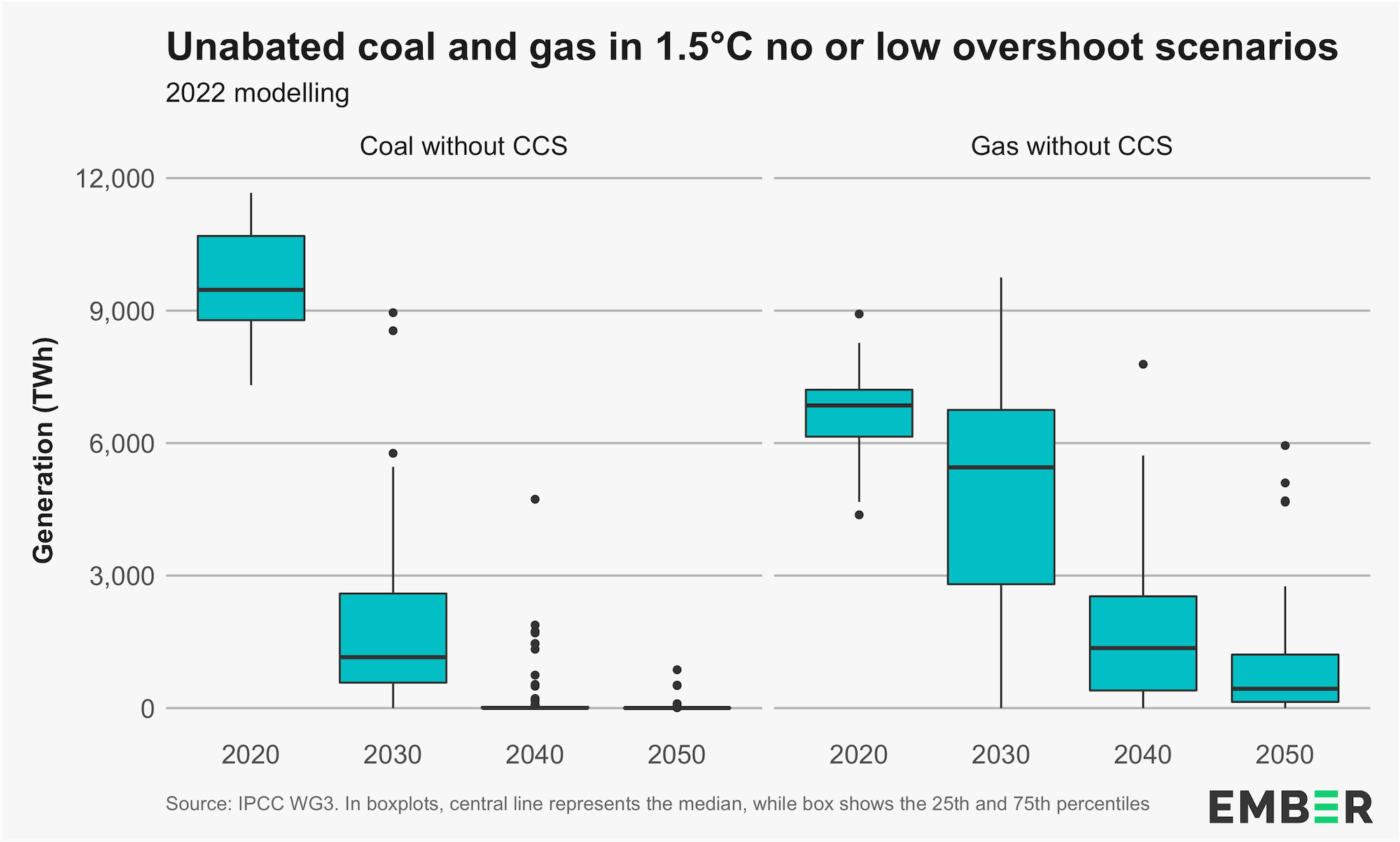
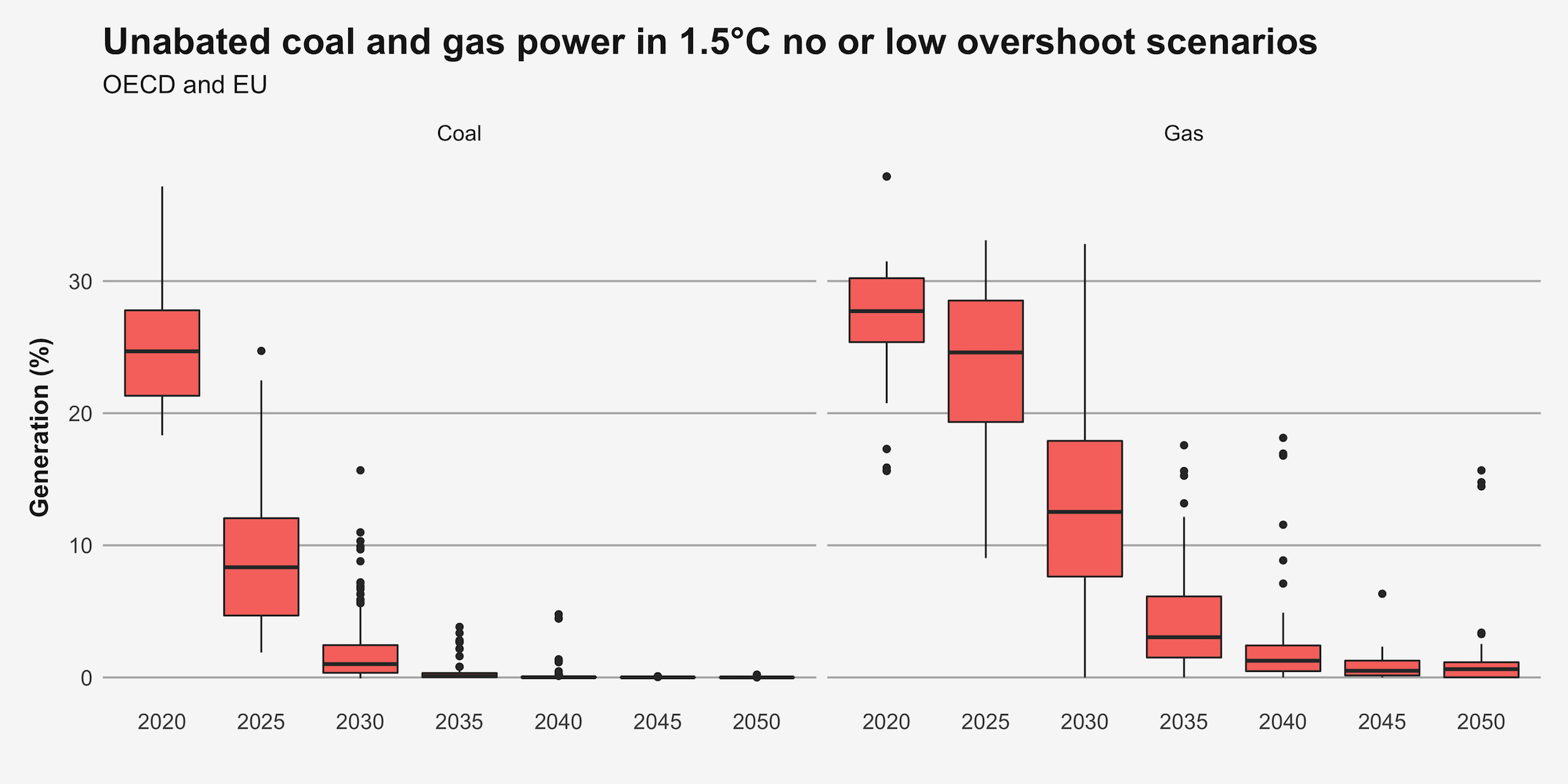
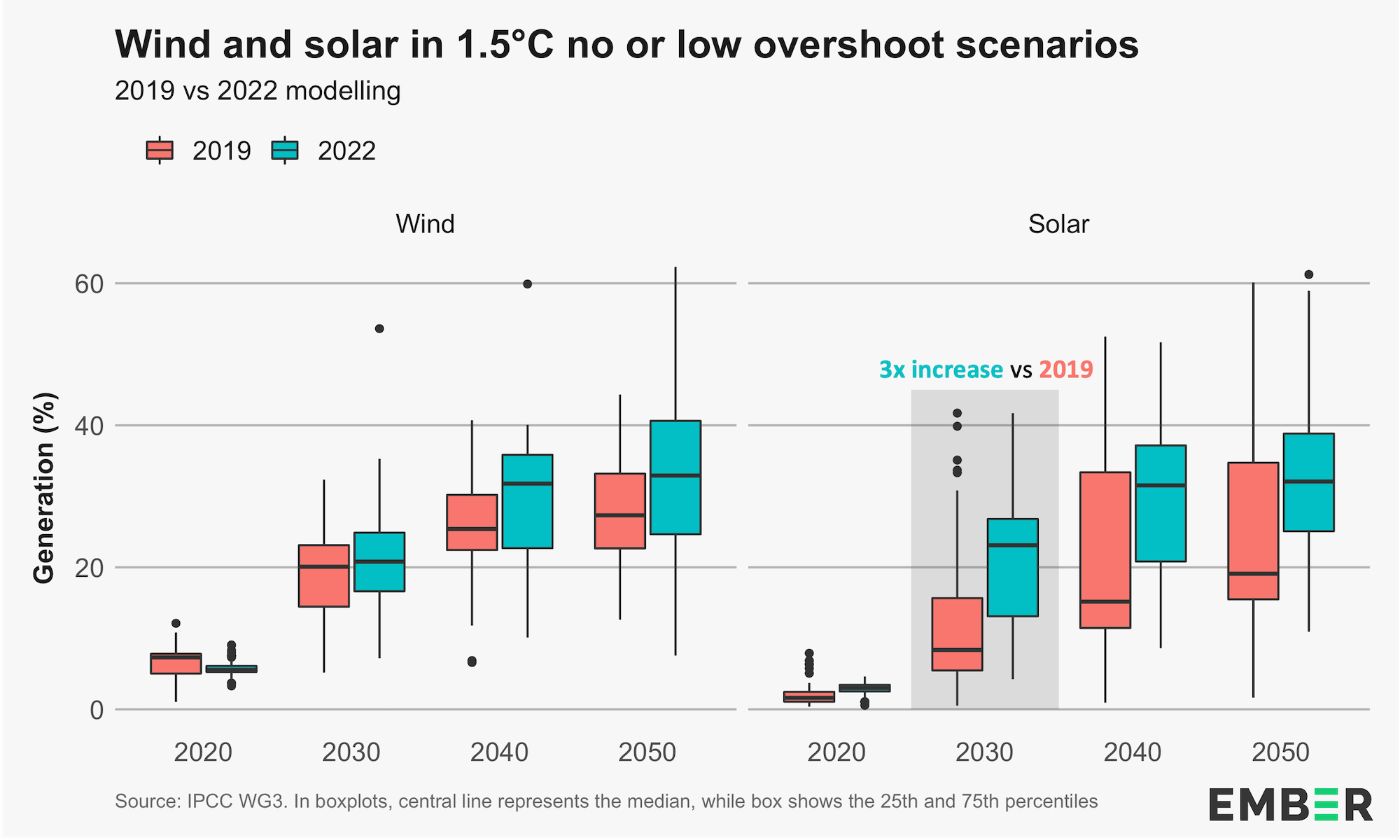


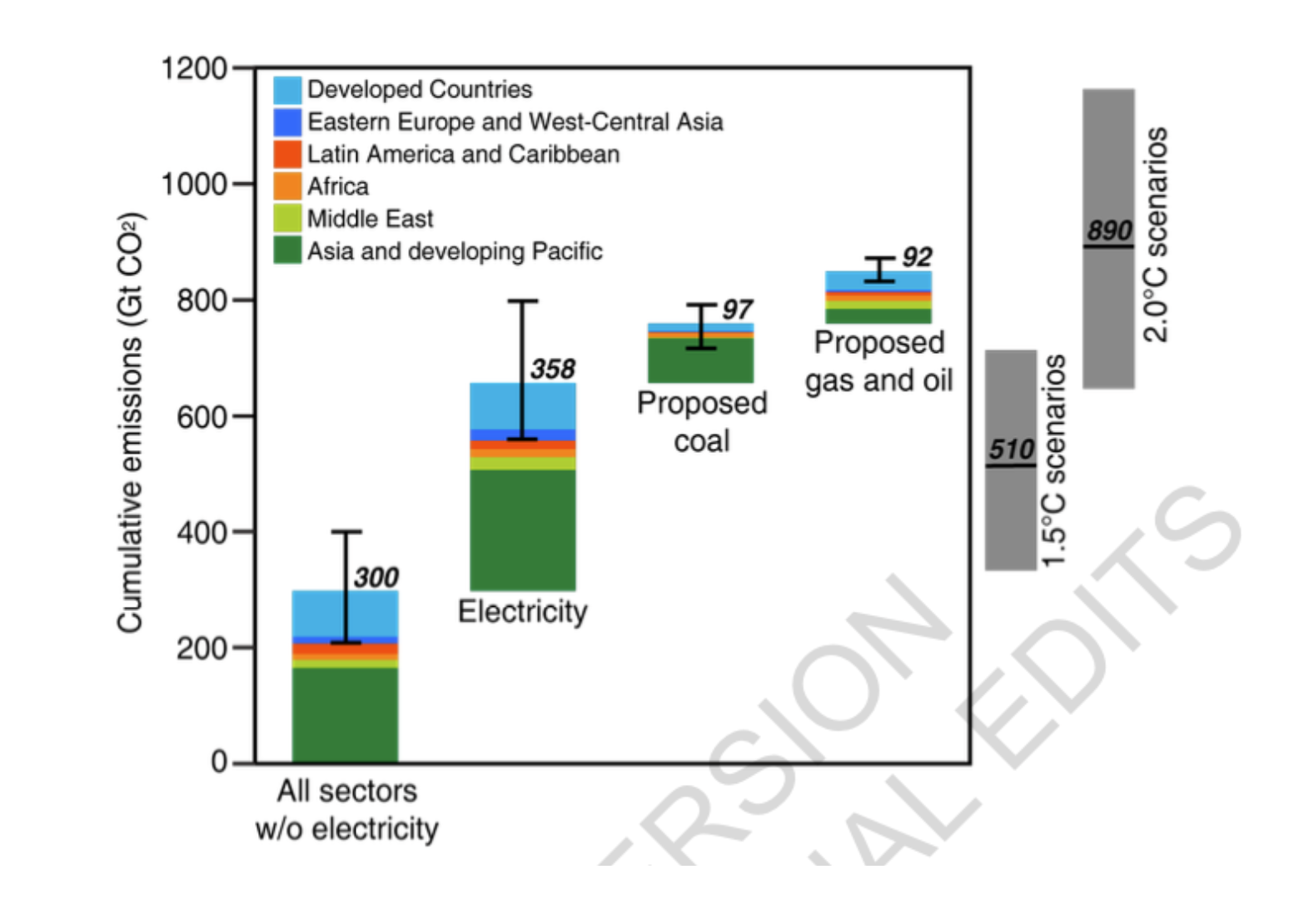



Ember’s power sector analysts have taken a first look at the IPCC scenarios published this week. Compared to the previous IPCC models published in 2019 the message for the global electricity transition is clear: we have less time to phase out coal, and wind and solar have even greater potential to help us achieve this.
We hope you find this round-up helpful. We will provide a more thorough analysis of the IPCC scenarios assessed in the coming weeks, giving a more detailed look into the global transition to 100% clean power. Please contact [email protected] with any questions.
Authors: Dave Jones, Matt Ewen and Nicolas Fulghum